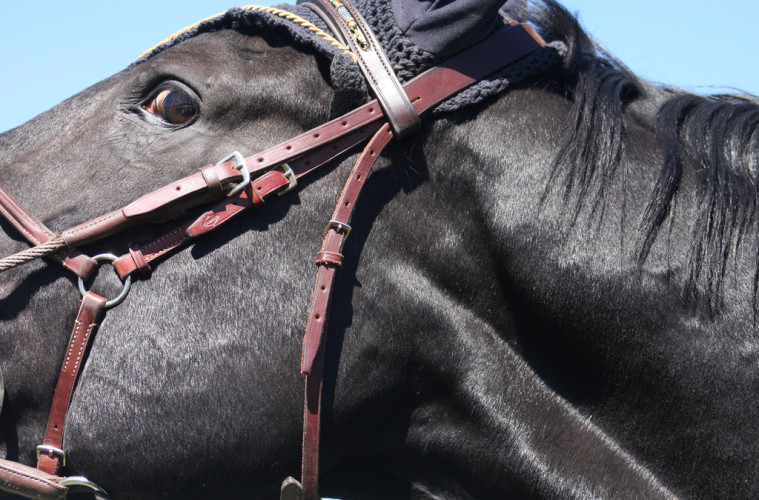Dr. Joyce Harman presents a four-part series to help horse owners better understand the increasingly-common but often misunderstood Lyme disease.
In Part I of this series, you learned that Lyme disease is caused by a specific type of bacteria called a spirochete, and it is able to disguise itself to sneak into mammal immune systems undetected. You also learned about the symptoms of Lyme disease. Here, we’ll talk about how to properly diagnose the illness.
Diagnosis
A combination of a thorough history along with a complete physical exam and blood work are required. The history often becomes the most important aspect. Many if not most affected horses show behavioral changes of various sorts, the most usual being lethargy, irritability or lack of interest in their surroundings. In some cases, the behavioral changes are more towards the hyperactive or spooky side. The key is that there has been a significant mental change.
The physical part of the history can include shifting leg lameness, stiffness, poor performance, and reluctance to turn, poor jumping performance etc. In many cases, horses have been worked up for subtle lameness and have had traditional treatments such as joint injections and various anti-inflammatories, but have not responded well. Diagnostic imaging may be inconclusive, or may point to joint inflammation yet treatment of that inflammation yields poor results.
Laboratory diagnosis
Laboratory diagnosis of Lyme disease can be very difficult even in humans where testing is significantly more sophisticated. This is in part due to the cleverness and changeability of the spirochete. Currently the best test is the Cornell Multiplex Lyme test that gives several results, whether the infection is acute or chronic in nature. The other test that is commonly used is a SNAP test, done by your vet. This may give an idea of whether an animal is positive or negative, but does not give the detail of the Cornell test, and seems to have more false negatives.
Holistic diagnosis
Since Lyme disease has many manifestations, there is not one clear-cut pattern from a holistic perspective. From a homeopathic perspective one needs to take a complete history and prescribe a constitutional remedy based on the animal’s presentation.
From a Chinese perspective, the Liver meridian is the most affected directly and indirectly by the spirochete. Many horses will exhibit signs of Liver meridian dysfunction, however there is seldom one pattern for all horses. Wind invasion is common and many symptoms are related to that, with shifting signs. There may be Liver Qi Stagnation, Liver Heat rising, Liver Yin deficiency, Liver Blood deficiency and so on. These may be combined with other patterns, often made more complex by long-term drug use.
The real key is to approach each case as an individual, from your perspective and experience, and treat that which is in front of you. It may change from month to month as well as from year-to-year.
Stay tuned for Part III; we’ll discuss several different treatment alternatives.
About Joyce Harman: Dr. Joyce Harman opened Harmany Equine Clinic, Ltd in 1990, bringing holistic healing to horses from all walks of life, backyard retirees to Olympic competitors. Over the years, Dr. Joyce Harman has observed and adapted to the changing needs the industry. Twenty-plus years ago, no one had heard of Lyme disease or Insulin Resistance, yet today that makes up a large part of her clinical practice.
In 2001, she wrote the first paper in a peer-reviewed journal about the possibility that horses have insulin resistance (IR), and now it is part of our every day conversation. In 2004 she published the first comprehensive book on English saddle fitting since the 1800’s, with the western version of the book following in 2006. To this date, these books are the only books written by an author who is independent from a saddle company, which brings unbiased information to the horse world.
In 2015, Dr. Harman released the Harmany Muzzle, a customizable and breathable grazing muzzle designed with the horse in mind. Because she deals extensively with metabolic and insulin resistant horses, she felt it was her duty to offer them a comfortable muzzle option.

